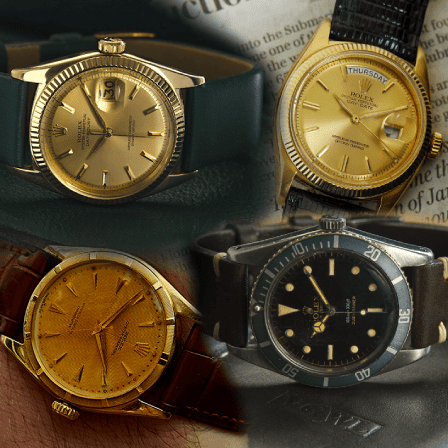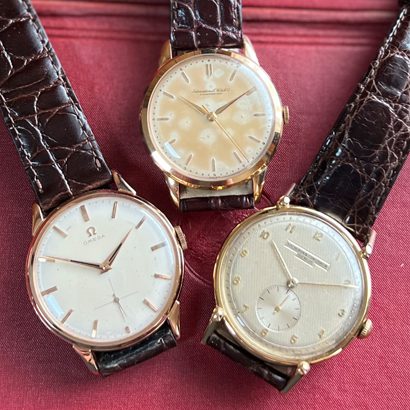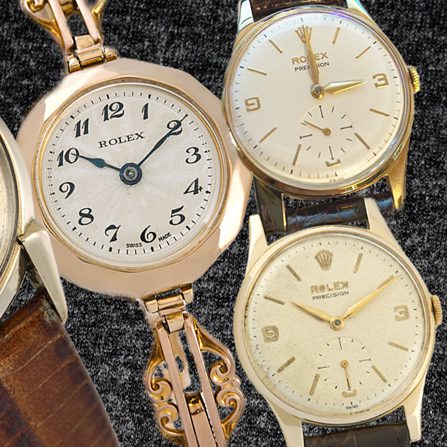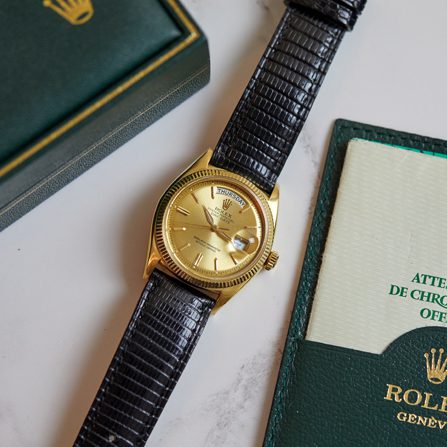
IMPORTANT VINTAGE
CHRONOGRAPHS TO COLLECT
Of all the complications a wristwatch can offer, the chronograph is the most popular, included in everything from a £5.00 digital watch to the £14,000,000 Paul Newman Daytona vintage watch.
Lovers of vintage watches are spoilt for choice; the chronograph wristwatch first appeared in 1913, so there is over a century of production to choose from. This guide highlights some of the more important vintage chronographs to collect.

Vintage Chronograph Timeline
- The chronograph was first attributed to Louis Moinet in 1816 for use in astronomy. It differs from a simple stopwatch in combining a regular time display of hours and minutes with a separate timing function.
- The first wristwatch chronograph was the 13.33Z calibre, produced by Longines in 1913. The crown controlled all the functions of winding, time-setting, start, stop, and reset.
- Breitling separated the start, stop, and reset functions from the winding crown in 1915, adding a pusher at 2 o’clock.
- In 1923, Breitling created the ‘flyback’ chronograph by moving the reset function back to the crown, allowing a successive number of times to be recorded without gaps.
- The chronograph took its familiar modern form in 1934 when Breitling patented a reset button at 4 o’clock.
- The addition of automatic winding to the chronograph movement didn’t happen until 1969 when three different movements appeared in the same year: the 6139 from Seiko, the Calibre 11 from Breitling, Heuer, and Hamilton, and the El Primero from Zenith.
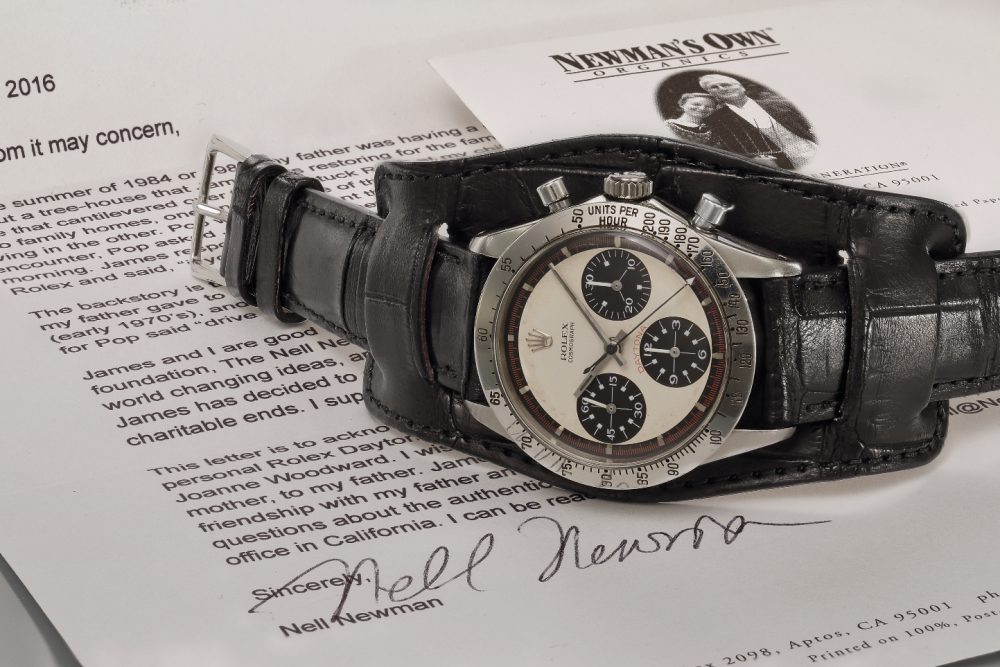
The Most Popular Complication
The enduring popularity of vintage chronographs among vintage watch collectors is out of proportion to the number initially produced; hence, they achieve high prices at auction and in the secondary market.
When first introduced, chronograph complications added to the cost of the watch and buyers generally did not look for functions they did not need—this limited interest to pilots, drivers, engineers, and others who used a timing function professionally. Today, the chronograph has come to epitomise sports activity and is worn by those who appreciate the aesthetic, even if they never use the functionality.
From the wearer’s perspective, it is one of the few watch complications that can be interacted with. A perpetual calendar, once set, should not be changed, whereas a chronograph can be started, stopped, and reset whenever the owner likes. This ‘fiddle factor’ adds to the chronograph’s appeal, even if the seconds hand only moves a short distance.
Vintage Chronographs: The Work of Experts
The production of chronographs is an activity typically carried out by specialist manufacturers. This means that the name on the dial or the movement is often not the initial maker. The movement is brought in, adapted, finished as necessary, and then cased up before sale. This makes the movement manufacturers the unsung heroes of the vintage collecting world. It also means that for every holy grail watch commanding high prices, there is a budget alternative with the same engine but a less sought-after name on the dial.
Valjoux 72
Created in 1938 and used until 1974, the Valjoux 72 was used in an extensive list of vintage chronographs. The triple sub-dial design has become the most familiar expression of the chronograph’s design.
This robust movement ran at 2.5Hz, meaning that the seconds hand could record intervals down to 1/5th of a second. Most notably, the Valjoux 72 powered the Rolex Cosmograph Daytona through several variants. Keeping the motorsport theme, the calibre 72 was also found in the Heuer Autavia.
Adding a calendar module created the Valjoux 72C as used in the Rolex ref. 6036 ‘Jean Claude Killy’ triple calendar chronograph, as well as the Heuer triple calendar shown here. While Rolex and Heuer command high prices due to their brand profile, Valjoux 72 movements can be found in watches from brands such as Invicta, Enicar, and Helvetica.
Venus 175/8
Between 1942 and 1960, Breitling widely used the Venus in addition to several lesser-known brands. The difference between the 175 and 178 designations is the number of subdials, with the 175 having two and the 178 three, such as this example from 1965. The 175 gave the Breitling Top Time its pared-back appearance while adding an hour counter suited the Navitimer.
The Venus calibres found their way to brands such as Helbros and Tavannes but struggled against the dominance of Valjoux, who absorbed them in 1966. The calibre 175 was sold to the Tianjin Watch Factory in China, where it is still used today, powering affordable microbrands.
Lemania 2310
Known initially at its launch in 1942 as the 27 CHRO C12, the Lemania 2310 is one of the greatest secrets in chronograph manufacture. While the calibre’s name may be unfamiliar to many, the movements developed from it include the Omega 321 calibre found in the Speedmaster ‘Moonwatch’, the Patek Philippe CH 27-70 Q and the Vacheron Constantin cal. 1142.
For a more affordable option, a collector could choose an Omega that didn’t go to the moon, such as this 18k gold chronograph from 1948, or hunt down a self-branded Lemania watch, which commands more moderate prices.
Zenith El Primero
One of a trio of movements produced in 1969 as the first automatic chronographs, the El Primero is the only one still in regular production. The first to announce to the world, the El Primero was the last to hit the market. This was due to its technical complexity, running at an unprecedented 5Hz and with an integrated design.
Rescued from obscurity in 1982 to power Ebel’s Sports Classic Chrono line, the movement was then adopted by Rolex for their ref. 16520 automatic Daytona – a watch that invented the waiting list. The movement found continued use by Zenith until now, including pieces such as this 18k gold limited edition. For a more accessible route to obtain this landmark movement, examples from Movado, an early partner in the launch alongside Zenith, DuBois et Fils, or Dunhill should be on the collector’s list.
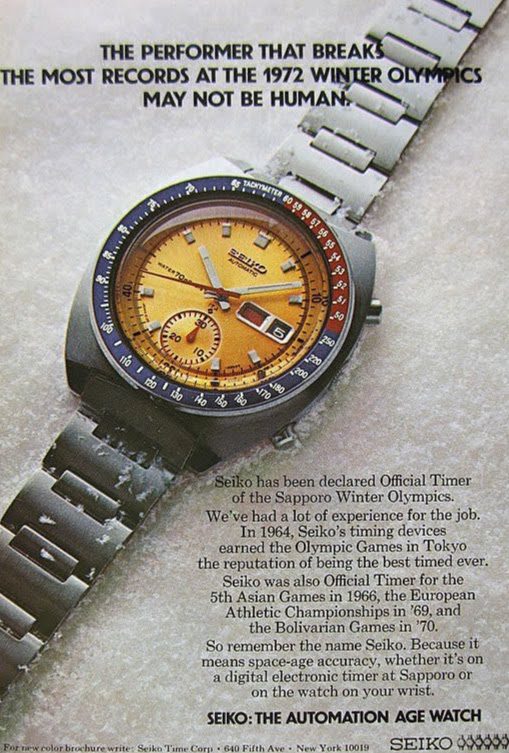
Vintage Chronographs Produced In-house
Some movements were produced in-house and stayed in-house, primarily used by the company that made them.
Longines
The first company to produce a wrist chronograph in 1913, Longines went on to launch calibre 13ZN in 1936. Commentators have dubbed this movement one of the most beautiful chronographs ever created, an outstanding achievement considering its era and the fact that Longines were not chronograph specialists.
Angelus
Although the first chronograph from Angelus, produced in 1925, was based on a Valjoux calibre, they worked simultaneously to create their in-house version, the calibre 210. By 1942, they had modified their movement to add day, date, and month displays, resulting in calibre SF 217, which powered the Chronodato model line as the world’s first full calendar chronograph. They continued to produce simple chronographs, including the calibre 215, as shown by this example from 1943.
Seiko
Seiko’s entry into the world of chronograph manufacture came relatively late and was driven by a specific event, the 1964 Tokyo Olympics. It was a matter of national pride that a Japanese company should produce the timing devices, and Seiko rose to the challenge, developing 36 models and 1,278 timing devices to be used at the Games.
While the reference 5719A was Seiko’s first chronograph, decorated with the Olympic torch on the back, its mono-pusher design and lack of subsidiary recording dials limited its utility. More seismic was the 1969 launch of the 6139 Speedtimer, arguably the first automatic chronograph available to the public. Not only was it released first, but this newcomer to chronograph production managed to add an advanced vertical clutch system, integrated movement design, and a quick-set day and date display.
Vintage Chronographs
Despite the ubiquity of the chronograph, this complication is one of the most challenging for any watch manufacturer to take on. Running what are two watches simultaneously, with one starting and stopping at intervals, without compromising the accuracy of either, is a difficult task. This is further complicated because chronographs have been worn in some of the most inhospitable environments on Earth and in space, so they need to be robust.
While vintage models may require more care than their contemporary cousins, there is a joy to be found in these tactile timepieces as they trace the development of technology. To explore a wide range of vintage chronographs or to find out more, head to Vintage Gold Watches.
Sign up for our regular newsletter to learn more about vintage watches.

OTHER BLOGS

